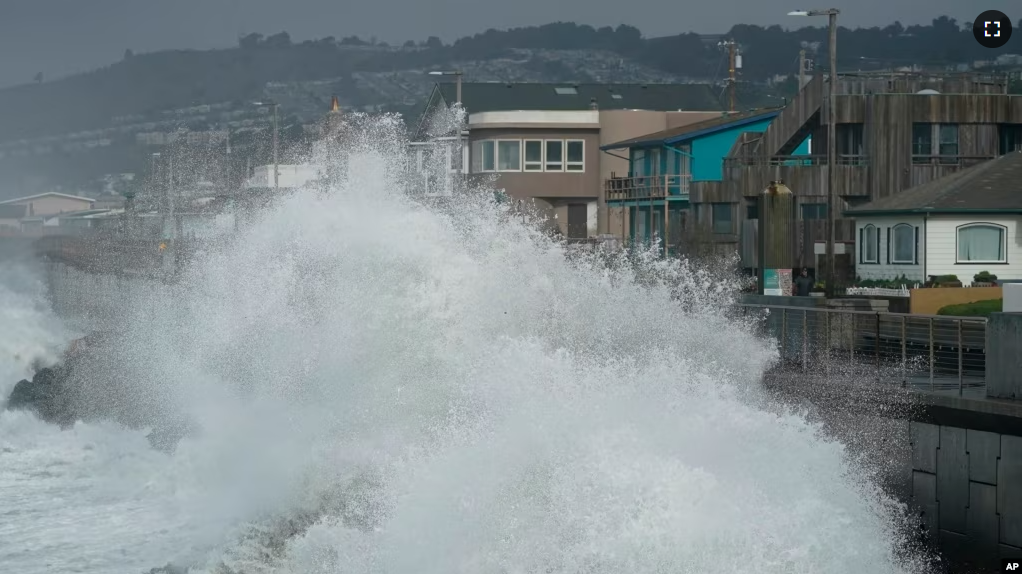An ocean researcher at the University of California, San Diego says waves are getting bigger and stronger since 1970. There are also more “big wave events” than ever before.
A big wave is about four meters tall or more.
Peter Bromirski at the university’s Scripps Institution of Oceanography looked at seismic records going back to 1931 in his research.
Seismic information is often used to measure the power of earthquakes. But Bromirski said large waves create enough energy to be measured by seismographs, also.
When large waves reach the shore, they bounce back and run into new waves. The crash sends energy through the ocean floor where it can be measured by seismographs.
Those measurements permitted Bromirski to judge the strength and size of waves over a period of 90 years.
Bromirski said he “stumbled upon” the seismographic information. Before the discovery, he said, “it was almost impossible” to compare waves from the past with those from the present.

It took a lot of work to put the data together. Much of the information was on paper. Bromirski and his team of student researchers had to put the information into a computer so they could examine the data. The slow process took years.
They found that the height of most waves in the winter along the California coast have grown by about 30 centimeters since 1970. Starting that year, waves of over 4 meters happened more often, as well. Between 1996 and 2016, the large waves happened twice as often as they did from 1949 to 1969.
Bromirski and his team published their research recently in the Journal of Geophysical Research: Oceans.
1970 is the year scientists believe the warming of the planet began to speed up. Bromirski says the new data shows that climate change is making ocean waves taller and stronger. That means they are more likely to damage the coast, roads and structures, such as piers and houses.
Bromirski said his research may be a warning that bigger and stronger waves are ahead. With more warming, sea levels will rise and waves will get stronger, causing flooding and more damage to land. The California coast has already been damaged by big waves in recent years.
Gary Griggs is an ocean researcher at the University of California, Santa Cruz. He did not work on the study. He said a 30 centimeter increase in wave height over 50 years is not that large. However, the findings of the study support what scientists already know: waves are becoming stronger and causing more damage along coasts.
He said Bromirski’s project adds to the data showing the world is warming fast and sea levels are rising.
“The challenge,” he said, “is sort of how to really respond to that.”
I’m Caty Weaver.
Dan Friedell adapted this story for Learning English based on a report by the Associated Press.
____________________________________________________
Words in This Story
seismic –adj. having to do with an earthquake or energy created by the shifting of the earth’s surface
stumble upon –phr v. a surprise discovery or unexpected encounter
pier –n. a long structure built in water that connects the shore to where boats dock and allows people to walk
challenge –n. a difficult task that takes hard work to complete
